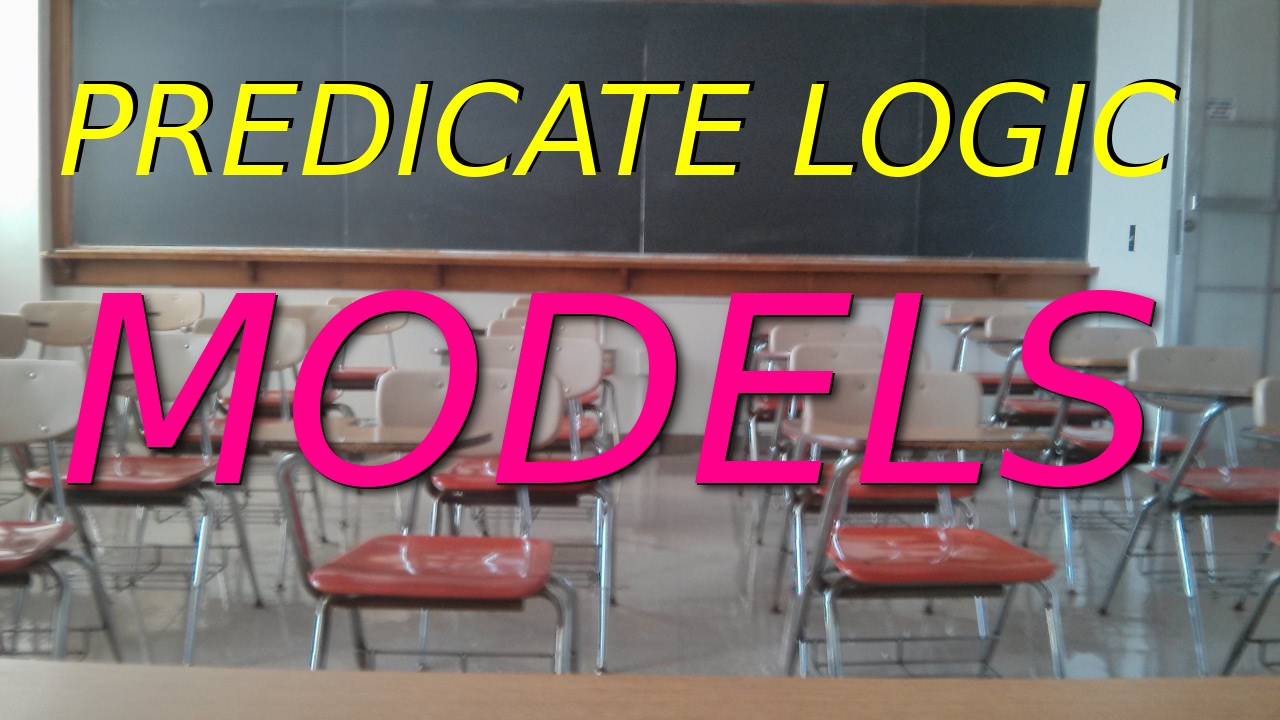David Agler
In this video, I give a brief overview of the notion of a model in predicate logic. This video sets the stage for a discussion of predicate logic valuations.
Predicate Logic Symbols: https://youtu.be/PTwGnYh0nS4
Predicate Logic Syntax: https://youtu.be/AQWeTrFBaXw
_____________________________________________________
• Symbolic Logic: Syntax, Semantics and Proof (Amazon): https://amzn.to/2RX7ALb
• SUBSCRIBE to my channel for more videos: https://goo.gl/ukVPLo
• Follow me on Twitter – https://twitter.com/davidagler
• Logic Website: http://davidagler.com/teaching/logic.html .(tagsToTranslate)symbolic logic(t)predicate logic(t)semantics(t)models(t)predicate logic interpretation




First video I have seen from you and I think its damn good
Very helpful! exam tomorrow 🙂
you just saved my life lol. amazing videos!!
wow this is the best explanation on predicate logic on youtube.
Thank you so much you saved me just before my exam!!!
23:10
For interpretations of predicates, are you allowed to use the letters in RL used to denote elements in the domain instead of the original domain objects.
In other words, can we write ?(C) = {a,b,c} instead of ?(C) = {1,2,3}.
Does it matter?
("_" means subscript, quantifiers are specified in brackets)
Hi David, I am having trouble with an unsure conclusion that i share with Gamut's Logic, Language and Meaning. Chapter 3, exercise 9: Prove that ( [for all]x(fi) → [t/x](fi) ) is universally valid (using valuations under a model M and an assignment function g). The demonstration that the book gives (pp. 249) goes like this.
"Suppose V_M,g([for all]x(fi)) = 1. It is to be proven that V_M,g([t/x](fi)) = I. That
V_M,g([for all]x(fi)) = I means that for all d [in] D, V_M,g((fi)) = 1. In particu-
lar, [[t]]_M,g is such an element of D. From this it follows that V_M,g([t/x](fi)) = 1 (strictly, this should be proven
with induction on the length of (fi))."
My concern is: from where does it comes the assumption that every name or variable "t" member of L is defined for the interpretation function I? Couldn't just exist a term t such that I(t) = undefined? In such a case, I(t) [not member of] D, where it follows that there is a counter-example to the universal validity of the initial formula.
Nevertheless, great videos and promulgation of logic to youtube 😀
nice and clear so far, thx..
this is 10x better than my prof. pls keep making more videos about computability and logic
Thanks!!
Thanks for making these videos! 🙂
This is incredibly clear and useful thank you so much.
I like the empty domain. Anything I want to say about the elements is true. And proofs are much faster.
why to logic professors have such hard times teaching it…
Wow, this is fantastic. Super clear! Thank you.
this is great!!! Thankyou
RESPECT!